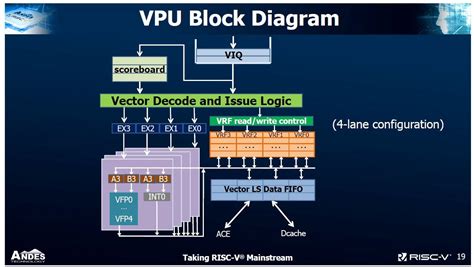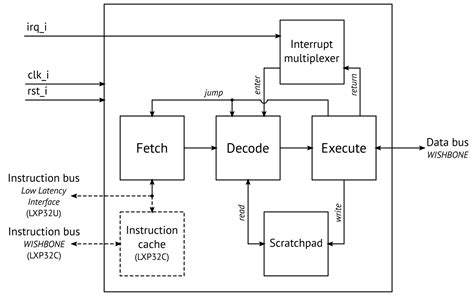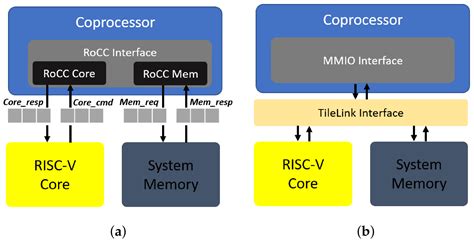Introduction to RISC-V and FPGAs
RISC-V is an open-source instruction set architecture (ISA) that has gained significant attention in recent years due to its flexibility, scalability, and open nature. Unlike proprietary ISAs like x86 and ARM, RISC-V is free for anyone to use, modify, and customize according to their needs. This has led to a growing ecosystem of RISC-V-based processors, tools, and software.
Field Programmable Gate Arrays (FPGAs) are semiconductor devices that can be programmed and reconfigured after manufacturing. They consist of an array of programmable logic blocks, memory elements, and interconnects that can be customized to implement various digital circuits and systems. FPGAs offer flexibility, rapid prototyping, and the ability to update designs in the field, making them popular for a wide range of applications.
The combination of RISC-V and FPGAs has opened up new possibilities for designing and deploying custom systems-on-chip (SoCs) that leverage the benefits of both technologies.
RISC-V Processor Implementations on FPGAs
Several FPGA vendors and open-source projects have developed RISC-V processor implementations that can be used on FPGAs. These implementations range from simple single-core processors to more complex multi-core designs with various features and performance levels.
Open-Source RISC-V Cores
-
PicoRV32: PicoRV32 is a simple and compact RISC-V RV32IMC core that can be easily integrated into FPGA designs. It is designed for small embedded systems and has a minimal footprint, making it suitable for resource-constrained applications.
-
VexRiscv: VexRiscv is a configurable RISC-V CPU core written in SpinalHDL, a high-level hardware description language. It supports the RV32I instruction set and various optional extensions, allowing users to customize the core according to their needs.
-
Rocket Chip: Rocket Chip is a more advanced RISC-V SoC generator developed by the University of California, Berkeley. It supports multi-core configurations, cache coherence, and a wide range of RISC-V extensions. Rocket Chip has been used as the basis for several commercial RISC-V implementations.
Commercial RISC-V Cores
-
Microchip PolarFire SoC: Microchip’s PolarFire SoC FPGA combines a hardened RISC-V processor subsystem with FPGA fabric, providing a flexible and power-efficient solution for embedded systems. The RISC-V subsystem includes multiple cores, cache memory, and various peripherals.
-
Xilinx Kria SOM: Xilinx has introduced the Kria System-on-Module (SOM) family, which features a Zynq UltraScale+ MPSoC with a quad-core Arm Cortex-A53 processor and an FPGA fabric. While not a native RISC-V implementation, the Kria SOM supports RISC-V acceleration through the FPGA fabric.

Advantages of RISC-V Processors on FPGAs
The combination of RISC-V processors and FPGAs offers several advantages for system designers and developers:
-
Customization: RISC-V’s open and modular architecture allows users to customize the processor core according to their specific requirements. This includes adding or removing instruction set extensions, modifying the pipeline, and integrating custom peripherals.
-
Flexibility: FPGAs provide a flexible hardware platform that can be reconfigured and updated as needed. This enables rapid prototyping, design iteration, and in-field updates, making it easier to adapt to changing requirements and optimize system performance.
-
Cost-effectiveness: RISC-V is an open-source ISA, which means there are no licensing fees associated with using RISC-V cores. This can significantly reduce the cost of developing custom SoCs compared to using proprietary processor architectures.
-
Power efficiency: RISC-V processors are known for their simple and power-efficient design. When implemented on FPGAs, they can be optimized for low power consumption, making them suitable for battery-powered and energy-constrained applications.
-
Ecosystem support: The RISC-V ecosystem has been growing rapidly, with a wide range of tools, software, and libraries available for development. This includes compilers, debuggers, operating systems, and application frameworks that support RISC-V-based systems.

Applications and Use Cases
RISC-V processors on FPGAs can be used in a variety of applications and domains, including:
-
Embedded systems: RISC-V-based SoCs on FPGAs are well-suited for embedded applications that require customization, flexibility, and low power consumption. This includes industrial control systems, automotive electronics, and IoT devices.
-
Aerospace and defense: The open nature of RISC-V and the ability to customize the processor make it attractive for aerospace and defense applications that require high levels of security, reliability, and performance.
-
High-performance computing: RISC-V processors on FPGAs can be used as accelerators for high-performance computing workloads, such as machine learning, data analytics, and scientific simulations. The flexibility of FPGAs allows for the implementation of custom accelerators that can optimize performance for specific applications.
-
Education and research: RISC-V’s open-source nature and the availability of FPGA-based implementations make it an excellent platform for education and research. Students and researchers can easily explore and modify RISC-V cores, experiment with different configurations, and develop new hardware and software techniques.

Challenges and Future Directions
While RISC-V processors on FPGAs offer many benefits, there are also some challenges and areas for future development:
-
Performance: RISC-V processors implemented on FPGAs may not achieve the same level of performance as hardened RISC-V cores or proprietary processors. However, the performance gap is expected to narrow as FPGA technology advances and more optimized RISC-V implementations become available.
-
Tool support: While the RISC-V ecosystem is growing, the level of tool support for RISC-V-based FPGA development is still maturing. There is a need for more integrated development environments, debugging tools, and performance analysis tools that can streamline the development process.
-
Standardization: The RISC-V community is working on standardizing various aspects of the ISA, including instruction set extensions, debugging interfaces, and system-level interfaces. Continued standardization efforts will help ensure compatibility and interoperability among different RISC-V implementations.
-
Security: As with any processor architecture, security is a critical consideration for RISC-V-based systems. The open nature of RISC-V allows for more scrutiny and transparency, but it also requires robust security measures to prevent unauthorized access, tampering, and side-channel attacks.
Conclusion
The combination of RISC-V processors and FPGAs represents a powerful and flexible approach to designing custom SoCs. The open-source nature of RISC-V, coupled with the programmability of FPGAs, enables a wide range of applications and use cases, from embedded systems to high-performance computing.
As the RISC-V ecosystem continues to grow and mature, we can expect to see more advanced RISC-V implementations on FPGAs, as well as better tool support and standardization efforts. The future of RISC-V on FPGAs looks bright, and it has the potential to revolutionize the way we design and deploy custom computing systems.
Frequently Asked Questions (FAQ)
-
What is RISC-V?
RISC-V is an open-source instruction set architecture (ISA) that defines the interface between software and hardware. It is a free and open standard that anyone can use, modify, and implement without paying royalties or fees. -
What are the benefits of using RISC-V on FPGAs?
Using RISC-V processors on FPGAs offers several benefits, including customization, flexibility, cost-effectiveness, power efficiency, and ecosystem support. It allows designers to create tailored SoCs that meet their specific requirements while leveraging the advantages of both RISC-V and FPGA technologies. -
What are some popular open-source RISC-V cores for FPGAs?
Some popular open-source RISC-V cores for FPGAs include PicoRV32, VexRiscv, and Rocket Chip. These cores offer different levels of complexity, performance, and features, allowing users to choose the most suitable core for their application. -
Are there any commercial RISC-V solutions for FPGAs?
Yes, there are commercial RISC-V solutions available for FPGAs. For example, Microchip’s PolarFire SoC FPGA combines a hardened RISC-V processor subsystem with FPGA fabric, providing a complete solution for embedded systems. -
What are some challenges associated with using RISC-V on FPGAs?
Some challenges associated with using RISC-V on FPGAs include performance limitations compared to hardened cores, the need for more mature tool support, ongoing standardization efforts, and ensuring robust security measures. However, these challenges are being actively addressed by the RISC-V community and FPGA vendors.
| Feature | RISC-V on FPGA |
|---|---|
| Customization | Highly customizable, allowing for application-specific optimizations |
| Flexibility | FPGA fabric enables rapid prototyping and design iterations |
| Cost | Open-source ISA, no licensing fees for RISC-V cores |
| Power Efficiency | Can be optimized for low power consumption |
| Ecosystem Support | Growing ecosystem of tools, software, and libraries |
| Performance | May not match hardened cores, but improving with advancements |
| Tool Support | Maturing, but still room for improvement |
| Standardization | Ongoing efforts to standardize various aspects of RISC-V |
| Security | Open nature allows for scrutiny, but requires robust measures |

No responses yet